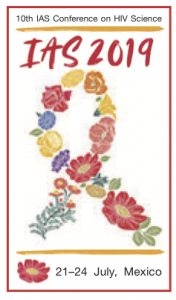HTB 24 July 2019 online: first reports from IAS 2019
24 July 2019. Related: Editorial.

This edition of HTB has been compiled at the 10th IAS Conference on HIV Science (IAS 2019) in Mexico City to include our first rapid reports from this meeting.
These focus on important news for global health and the latest developments for HIV treatment.
We lead with an optimistic review by Polly Clayden of latest data to inform the earlier signal that linked dolutegravir with a risk of neural tube defects if taken during conception or the first four weeks of pregnancy. Continued surveillance will remain essential. A related report also supports the use of efavirenz 400 mg.
These results led to the latest update of WHO treatment guidelines that recommend dolutegravir as first-line therapy for all. This is a significant achievement for bringing newer, more effective and more tolerable options to people living with HIV globally.
The second set of reports focus on new compounds in development including a new capsid inhibitor GS-6207, phase 2 dose-finding results with the newly-named islatravir (previously MK-8591), and 96-week results on the fostemsavir as an investigational compound for multidrug resistance. Islatravir also has potential for a slow-release long-acting PrEP implant that if shown to be effective would deliver drug levels for more than a year.
Dolutegravir was also widely reported for sustained viral efficacy out to 96-week results in the dual FDC with lamivudine and for the first phase 3 randomised data for this recently FDA and EMA approved combination as a switch option for people currently stable on TAF-containing ART.
We also include as supplements to this issue the i-Base report Fit for Purpose: antiretroviral treatment optimisation, and the related HIV Pipeline Report for 2019.
Further reports from IAS 2019 will be posted online as early access reports.

